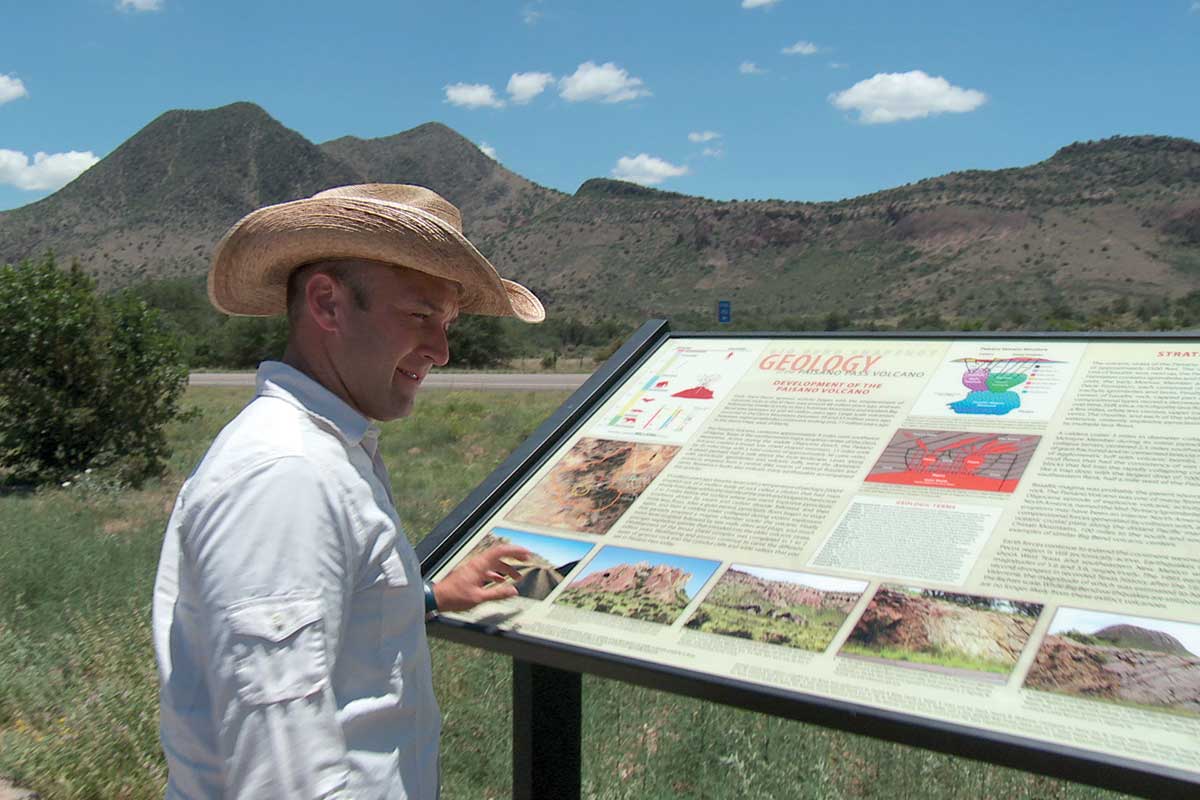If I close my eyes to imagine a volcano, I see a Polynesian island with palm trees, beaches and an endless ocean. I definitely don’t imagine the cactus-filled landscapes of West Texas.
Yet there I was, standing on the shoulder of U.S. Highway 90, halfway between Alpine and Marfa, staring at the Paisano Pass Volcano, which—fortunately for visitors—has been dormant for about 30 million years.

Chet studies a roadside panel depicting the history and geology of the Paisano Pass Volcano.
Courtesy Chet Garner
The drive west from Alpine to the ancient site was impressive. Red cliffs and strange rock spires on each side of the road made me feel like I was traveling back to the Cretaceous Period. Honestly, I wouldn’t have been surprised if a T. rex had crossed the road in front of me. I crested a hill and dropped into a valley, where I pulled into a roadside park to read an educational panel about the lava-formed landscape.
All around me were colorful cliffs, knobby boulders and crag-covered mountains that were formed during the Oligocene Epoch, 23–33 million years ago. Dinosaurs were extinct then, but giant mammals walked the earth, including 18-foot-tall beasts that looked like a mix between horses and rhinos. It was during this era that the Paisano Pass Volcano exploded and then collapsed back onto itself, leaving a 3-mile-wide caldera that stretches as far as you can see from the small park.
Geologists come from all over the world to study this volcano because it exposed layers of rock normally hidden miles below the surface of the earth. The Big Bend is still tectonically active and has even experienced violent earthquakes as recently as 1998. While another volcanic eruption is unlikely, I never say never in Texas. And so I promptly got back in my truck and continued down the road.


